About the work of cinematographer Robbie Ryan, BSC, ISC, on Yórgos Lánthimos’ film “The Favourite”
"Dancing Queen", by François Reumont for the AFCThe film was shot on silver-process film between March and May 2018 on location at Hatfield House, about thirty kilometres north of London. “A set you’ve seen dozens of times on screen !” jokes Robbie Ryan. “Ridley Scott had just shot All the Money in the World there, but a lot of other film crews have been through there as well ! The thing is that the monument is extremely well preserved, and the shooting conditions are very strict. You’ve got to take extreme precautions so as not to damage anything, and equipment handling is often checked over by the security personnel.”
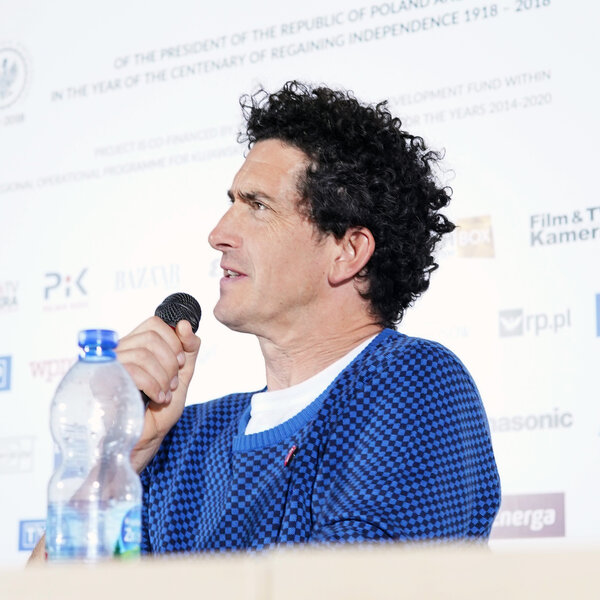
Asked about the choice of extremely short lenses used on this period film, the cinematographer replied, “Yorgos Lanthimos only chose lenses with a focal length between 6mm and 17.5mm, and then directly went to 75mm for the close-up shots on the actors. The result is a visual language that is recurrent from scene to scene, alternating between long close-up takes, often with forward or backwards movement, with a sort of visual frensy that the viewer gradually digests after the first fifteen minutes. Yórgos wanted to make a film that would look like Zbigniew Rybczyński’s Angst, a 1980s cult movie [one of Gaspar Noé’s bedside films—Ed.] that I was unfamiliar with but that he introduced me to. This film was shot almost entirely with a sort of inverted camera harness attached to the actor in such a way that the set moves around him while he remains fixed in the centre of the frame. When he explained that tome, I knew he wanted to shoot in 35mm with 18th-century costumes...I thought, “hm, hm, that’s going to be a bit tricky !” So, instead, we perfected this sort of eccentric visual language that alternates between very close-up shots. We wanted to create extreme definition in the image, with a lot of sharpness, so we chose Panavision lenses, and in particular, the 6 mm fish-eye. It is a rare lens, a glass monster that you don’t see very often on sets, but that produces incredible images. We also used the 10mm lens and the 17.5mm lens a lot”
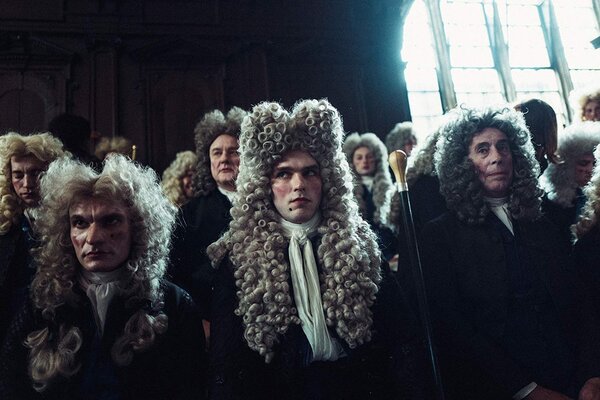
Asked about preparation, the cinematographer replied with a smile “That’s not really my thing ! Believe me, you can prepare a film as much as you like, and everything can go wrong from the first day ! The few preliminary meetings Yórgos and I had mostly comprised of informal discussions, over coffee, without ever really discussing a shooting script or a story-board. I didn’t even ask him why he’d chosen me. I knew that he’d worked with Thimios Bakatakis on his prior films, but I didn’t really try and find out why me this time. I just thought to myself that it was like he had wanted to change girlfriends, and I just wanted to enjoy the moment !”
Even though preparation doesn’t seem to be his cup of tea, Robbie Ryan admits that there were rehearsals. “I remember them very well because Emma Stone had just come back from the Oscars with her statuette ! We spent a few days doing set ups with the actors, and especially working with a choreographer because they had to act their scenes while doing pretty extreme dance movements. After that, everyone was warmed up and we were able to begin shooting with total confidence.”

Choosing to film the majority of the picture with Kodak Vision 500T, Robbie Ryan nonetheless had to use 50D film for some of the outdoor day shots shot in 6mm or 10mm, because no neutral filter could cover the field of those lenses. He also admits that he pushed the development and used fine-grain developer on some of the scenes for the first time in his career. The film was developed at the London Kodak laboratory.
“The lab did a great job, but we were just scared one day when we got dailies where the candles were totally pink... We realized that it was just the telecine operator who must have been tired during the night and had fallen asleep without adjusting the settings on the machine !”
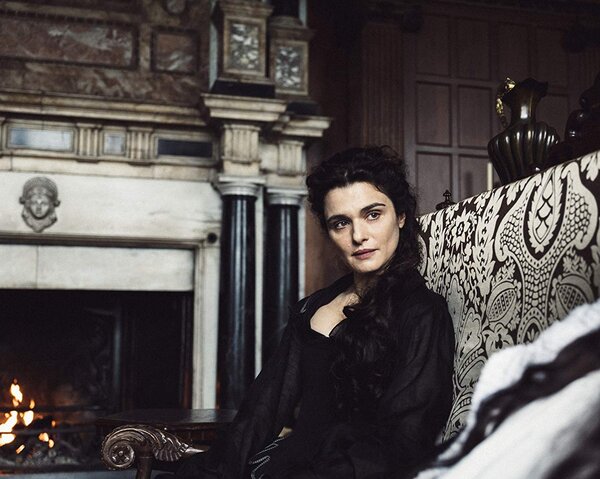
Although the 18th-century scenes shot in natural light might make you think of a certain Stanley Kubrick film, Robbie Ryan says that there was no direct reference to that film. “It’s funny that he’s become the international reference for images of the 18th century. Because there have been a ton of films made since then, some of which are really great ! As far as I’m concerned, on The Favourite, shooting in natural light wasn’t a gimmick or an artistic dogma, but rather a necessity imposed by Yórgos’ directorial style. Besides a few shots that were slightly lit (such as the dance scene before the Queen, with the soft and diffuse top light of a Blanket-Lite), we almost never used spots. Andy Cole, my gaffer, was mostly asked to prepare sets full of candles placed on rolling carts, that we could move about as we needed. The problem is that lots of candles end up melting ! On the first day, he suddenly found himself with wax spilling over onto the set, pooling up on the floor of a protected historical building ! He immediately began to surreptitiously clean it up before the security personnel noticed !”
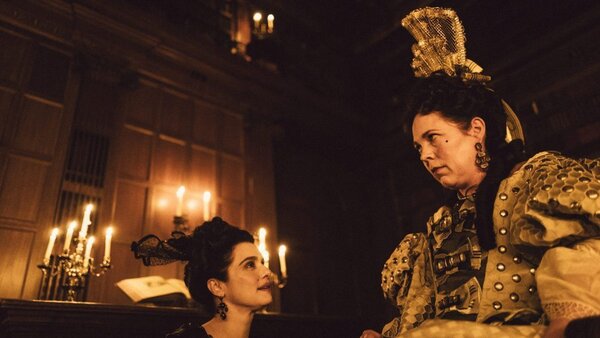
Because the rooms of Hatfield House contain regularly-distributed large windows that let in a lot of light, the cinematographer mostly used natural sunlight, taking the risk of a lack of continuity in the event of a change of weather. “It was a bit of a chance, and we had no planB,” explains Robbie Ryan. It was a winning bet. “The weather really cooperated, and we had splendid weather. We especially avoided those grey days that can even turn into darkness in the early afternoon at the end of winter in that region. In any case, it would have been impossible to place HMIs outside of the windows without seeing them.”

Asked about the difficulties he experienced on some of the scenes, he answered that it was mostly the shots involving horses and carriages that caused him certain difficulties. “For those scenes, Yorgos wanted me to follow the movement myself and we had to use a very heavy Double Helix stabilizer that wasn’t at all easy to manoeuvre. I had the most trouble on those shots in the forest.” The rest of the camera movements indoors were mostly shot on a dolly, with a much more comfortable method, where the panoramic shots provide more of the “schizophrenic” feel observed in Zbigniew Rybczyński’s film.
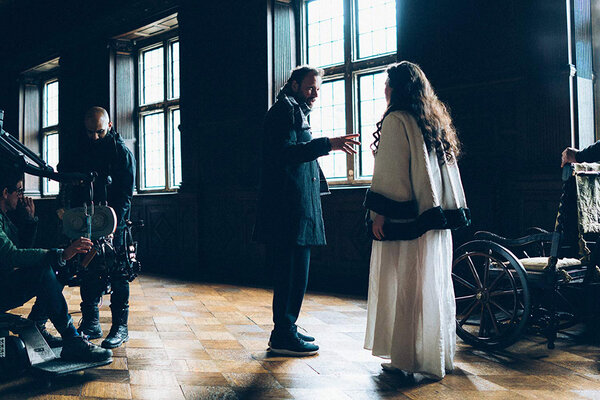

Unable to participate in colour grading, Robbie Ryan handed over the keys to the director. “Since I had to leave to work on another film in the United State, I couldn’t free myself up. But Yórgos knows exactly what he wants in terms of image, and the combination of the choice of location, the set design (Fiona Crombie) and the costume design (Sandy Powell) had forged a very precise artistic direction, combining the colours of the location and a nearly black-and-white line for the costumes. Moreover, the colour grader was someone whom I’ve been working with since Fish Tank, so I wasn’t surprised by the result.”
(Translated from French by Alexander Baron-Raiffe)
 En
En Fr
Fr





